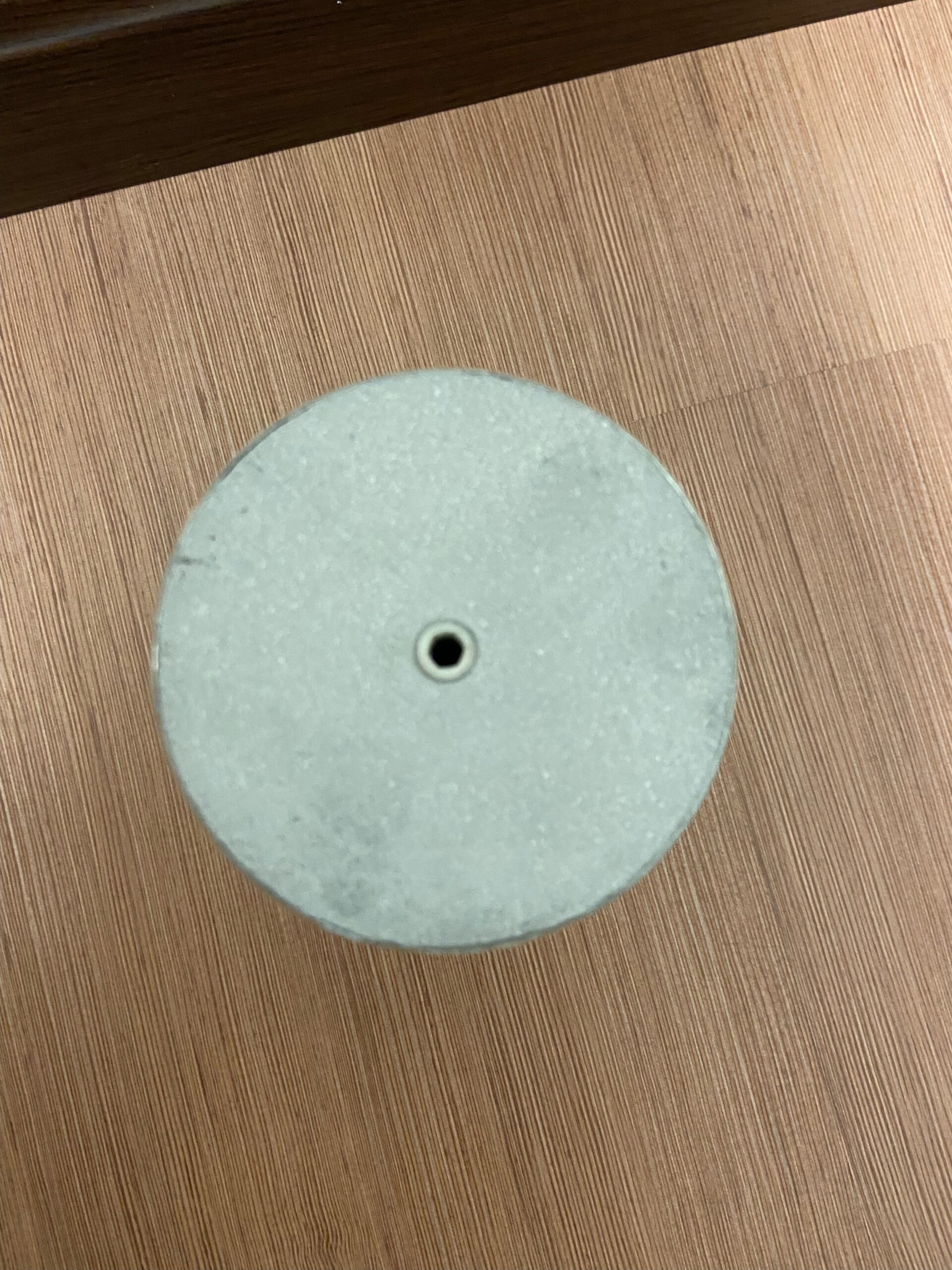The capacitor industry faces strong competition that forces her to economize on production costs and raw materials. Unlike, consumers are increasingly demanding customers high quality and reliability at low prices.
The imperative for the producer is the advanced automation of the plants and the reduction of costs, as the consumption of metallized film, metals to be sprayed (Zn) and waste reduction.
Function of the coating sprayed onto a metallized film capacitor obtained from
The function of the spraying of zinc is to create an electrical conductivity between the metallic coating film of the insulated conductor and the plate. This contact must have the lowest possible resistance. Also, the coating must be mechanically stable to withstand the welding of insulated conductors.
Thermal sensitivity of the metallized film
The base film which is subsequently metallized in the capacitors can be obtained from polyethylene, polycarbonates, politetrafluoruro eto, polypropylene, and other. Each of these movies has some features in common: deformation or melting temperature of the film much below the temperature of the particle in the process of spraying. The film metallized with zinc, aluminum and their alloys do not affect the sensitivity of the technique of film base. One factor that has influence on the thermal sensitivity of the film during the spraying process is the thickness of the film. A thicker film is less prone, compared to a thin, to be damaged during spraying. This depends on the fact that the thermal energy can disperse and expand more easily through a thicker film. Also, the narrower the winding, better is the resistance against the damages caused by the energy released by the process of spraying, because the energy can be distributed evenly through the winding.
Basic principles of thermal spraying
The process consists in a heat source that melts the 2 metal wires that are atomized into fine particles. The particles are accelerated and projected towards the surface to form a coating of lamellar structure. In the process of the two-wire electric arc spraying (one positive and the other negative) are fed simultaneously and continuously to the point of the short circuit, creating an electric arc and, thanks to the jet of compressed air, the fine particles of the molten metal are projected towards the substrato.L'attrezzatura consists of a transformer and a gun. With the transformer current electric voltage must not fall below 1,5 times during the operation. Originally it used a transformer for welding, which required a higher voltage than necessary, with negative effects to which we shall refer hereinafter. The process is an alternative to current with a frequency of 18 KHz. During the alternation, the plasma between the two tips of the wire expands and contracts. This causes the resistance to change, followed by a pulsating current. The impedance of the transformer must be able to adapt to this behavior and, unfortunately, the transformer of the welding machine is not able to perform this operation. A better approach is to use a generator specifically designed and manufactured to spray with the electric arc, that is able to supply the required voltage without a significant decrease of the voltage.
Cables and hoses that connect the generator to the contact tubes with a lower resistance can.
The cables must be able to release the electricity generated and originated from the fast resistor.
The power supply system of the wires
Must be able to feed the two wires continuously and at an equal speed. An irregular or different speeds of the two wires causes arc instability and generates coarse particles. The feeding mechanism should not change or damage the surface of the wires. Each notch or slime on the surface of the wire, caused by the rollers, could cause an unstable arc, since the cross section is no longer continuous.
Contact tubes
Serve to transfer the energy of the generator to the two wires; said transfer shall take place without interruption and with a mechanical contact is slightly inclined. You should avoid contact tubes linear, since these create the coils, causing wear of the surface of the contact tubes. The wear rapidly consumes the contact tubes but, what is more serious, creates an instability that causes the electric arc sparks, blocks and tangles. The curved pipes require the wire to maintain a uniform contact and an easy sliding forward in the tubes; all this translates in a passage of uniform current and complies. The bent tubes transfer the contact point with precision to the short circuit. This controls the length of the wire between the contact point and the arc. The resistance along the length of the wire is always the same and ensures a very stable arc. The second task of the contact tubes is to present both wires simultaneously appointment of the electric arc. The wires must be aligned exactly opposite each other to allow higher current density in the plasma, which increases the stability of the arc.
THE SYSTEM OF SPRAY
Guides the air to the point of the electric arc, at the top of the two contact tubes. For a stable arc is very important that the pressure of the plasma is constant. Only with a constant pressure and with the fusion of the two wires with the same uniformity of current, the system can produce a melt at a constant temperature. By focusing the compressed air in and around the plasma, you get a concentrated jet, since the size of the particles and their distribution are affected by the concentration of the gas.
IMPORTANCE OF TENSION IN ELECTRIC ARC ENERGY BALANCE
Using a given voltage, a determined air pressure and a given diameter of the wire, the spraying capacity in Kg / h is directly related to the amperage that, during spraying of zinc, corresponds to 1:10. The total energy in a molten particle can be described as follows: energy preheating (from the melting temperature to the temperature of overheating)
* Qo Qp Qm = Q totale
Example
T Merger T Evapoorazione
Zn 420° 907°
Sn 232° 2360°
Al 660° 2500°
This means that the temperature of a particle can be fused between the melting point and that of evaporation. Heating the wire above the melting temperature, overheating occurs Metal, with the consequent reduction of the quality of the entire spraying process. The energy of the plasma during plasma is calculated Q V * 1, assuming that there is no loss of energy in the form of radiation; all this energy is transferred to the merger. The minimum voltage in the spraying of a zinc wire diameter 1,6 mm is 18 times and this means that to melt 10 Kg of zinc require 100 amp, for which the minimum energy required to melt 10 Kg di zinco è 18 volx100 = 1.800 watt.
If we increase the volts to 24 and merge 10 Kg/Zn/n = 24×100 = 2.400 watts. The extra energy determines particles with higher temperature and the need to increase the spraying distance. The temperature of the particles can rise up to the evaporation.
SENSITIVITY 'THERMAL FILM METALLIC
E 'need to maintain the temperature of the molten particles, when they reach the surface of the film, as low as possible and, to do this, you have to keep the voltage (voltage) the lowest possible, consistent with arc stability.
IMPORTANCE OF PARTICLE SIZE
The temperature of the particles that are deposited on the film surface is equal to the temperature of the metal. It 's very likely that the temperature of the particles is much above the melting temperature of the film. The temperature of distance of the film is much lower than the melting temperature of the particles sprayed. It 's very important that the energy in a single particle is transmitted to the film in such a way that the film is not destroyed but only melted at the point of impact. The total energy of the particles sprayed must allow the film to cool without heat build-up and without causing distortions in the film. A special nozzle atomizer enable the spray jet, with an appropriate air pressure, to postpone the size of the particles in a narrow range. The second advantage of the special nozzle atomizer is a spray jet very concentrated, to avoid both over spray both the consequent loss of wire.
IMPORTANCE OF DISTANCE OF SPRAYING
The spraying distance influence the temperature of the particles to contact with the surface. During spraying of the arc on the surface of the particles are cooled in the condenser. The most important deposit is first applied on the surface of the film. Once the metallic deposit is applied, there is a heat conductivity. The heat of the particles is later released from the storage and expands evenly throughout the metal available, followed by the release of air below. For good adhesion to the surface of the film and after the first deposit on the condenser layer already formed, it is important that the particle splash is still in the molten state. All of the solidified particles bounce off the surface or trapped in the layer being formed. When they bounce only affect the efficiency of the deposit. When they are trapped in the layer and between the film and the layer formation in, these particles do not reduce the adhesion of the molten metal and cohesion. Basically the shorter the distance of the spray (without damaging the surface of the film) the better the quality of the coating and the lower the formation of scraps. If the range of the magnitude of the temperature of the particles is large, thanks to the high voltage and the overheating of the particles, the distance should be designed to compensate for this. So it must be increased to take account of the particle with the highest temperature in order to avoid that the film distorts. On the other hand, we know that the finest particles solidify before contact with the film when the distance is too high, causing the problem described before. Also, the efficiency of the deposit will precipitate rapidly and will increase the consumption of metal by increasing the distance. The shortest distance used in the film of propylene, when spraying zinc, is 120 mm operating under conditions of controlled production.
The quality of the spraying heads of the capacitors can be increased while simultaneously reducing the costs of production, if the magnitude and the temperature of the particles are contained in a narrow range.


